WHY ARE BEES SO IMPORTANT?
In recent decades, the bees numbers have declined sharply. This is partly due to petrification, too-rigorous mowing of roadsides, the disappearance of wildflower fields, lack of nesting opportunities and the use of pesticides for plant protection.
This decline isn't only bad news for bees, but for us. A bee shortage jeopardises our food production as well as the creation of new plants. Did you know that:
- Over 75% of all fruit and vegetables are pollinated by insects, mainly by bees.
- Some 35% of the world's production of human food depends on pollination.
- As many as 80% of all plant species depend on insects, such bees, for pollination.
Fortunately, there are things we can all do to help. Read on to discover planting tips and concrete examples of what to do to ensure happy bees, butterflies and other pollinators!
ATTRACTING MORE BEES AND BUTTERFLIES IS SIMPLE
Attracting more bees and butterflies doesn't require a large garden or balcony or a major metamorphosis of your outdoor space. Having just a few relevant plants will make a difference. Check out these ready-made plans for garden borders for inspiration and mix those plants our picks of the top 15 plants for butterflies and the top 20 plants for bees which we explain below.
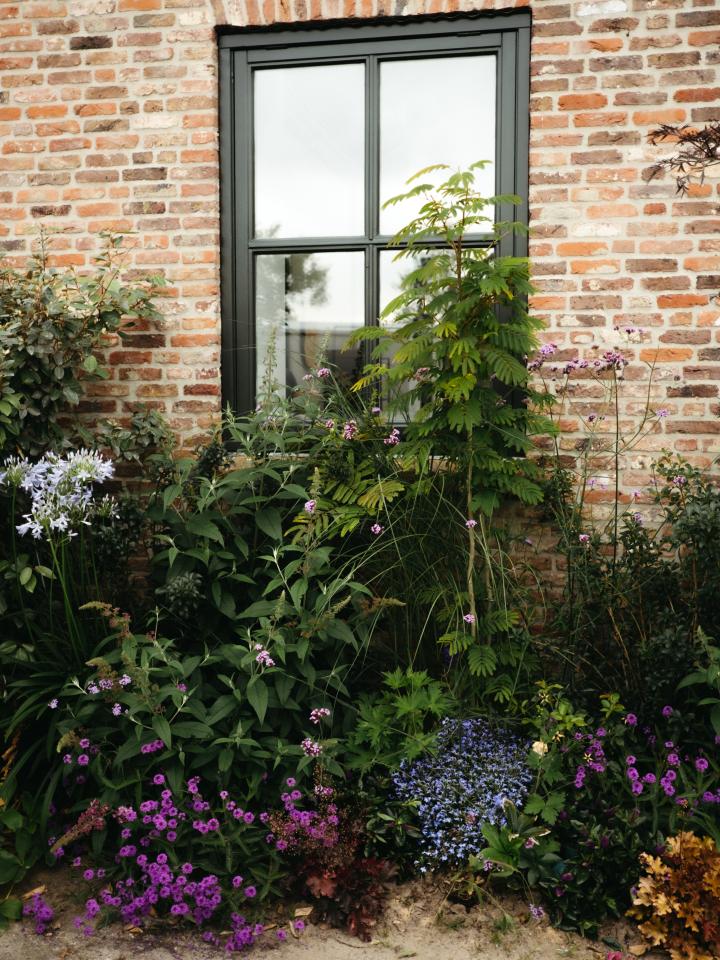
NECTAR-PRODUCING PLANTS FOR MORE BUTTERFLIES AND BEES
The best way to attract butterflies and bees is by planting nectar-producing plants. Most nectar plants have beautiful flowers, so they're a feast for your eyes as well as for the insects. Discover the top 15 plants for butterflies and the top 20 plants for bees below. It's useful to know that these plants overlap, as bees and butterflies tend to love to same kind of plants, so whatever you choose it's a win-win!
TOP 15 PLANTS FOR BUTTERFLIES
Butterflies live off nectar, a sweet substance produced by flowers. This is because nectar contains sugars, proteins and vitamins that female butterflies need to produce eggs. Below are 15 popular nectar plants that butterflies love. Plant these and chances are you'll be visited by butterfly species such as day peacock, atalanta, little fox, whitefly and or hyacinth aurelia! Note that flowering times may vary by species.
- Snowball (January-April)
- Whitflower (April-June)
- Jewelweed (May-July)
- Lavender (June-August)
- Buddleja (July-September)
- Catnip (June-August)
- Marjoram (June-August)
- Sunflower (June-September)
- Queen's wort (July-September)
- Yarrow (July-October)
- Autumn aster (August-October)
- Cornflower (August-October)
- Ivy (September-October)
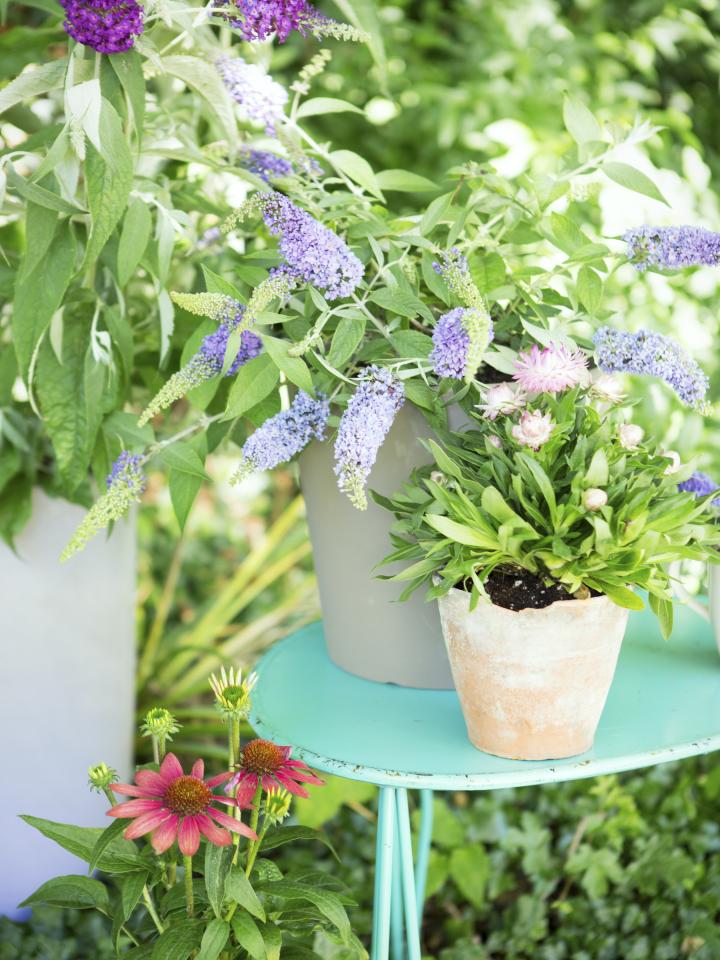
TOP 20 PLANTS FOR BEES
Bees will love any plant from this list. It's a good idea to have varying types of nectar plants to give different species of bee some choice. Be aware that the listed flowering times of the plants may differ per species.
- Snowdrop (January-March)
- Crocus (February-April)
- Rosemary (March-May-September-November)
- Campanula (May-September)
- Sage (May-July)
- Phacelia (May-September)
- Thyme (June-September)
- Catmint (May-September)
- Snapdragon (June-October)
- Larkspur (June-August-September)
- Hollyhock (June-September)
- Lavender (June-August)
- Foxglove (June-August)
- Sea knot (June-August)
- Nasturtium (June-September)
- Buddleja (July-September)
- Sunflower (July-October)
- Beehive (July-October)
- Dahlia (July-October)
- Autumn aster (August-November)
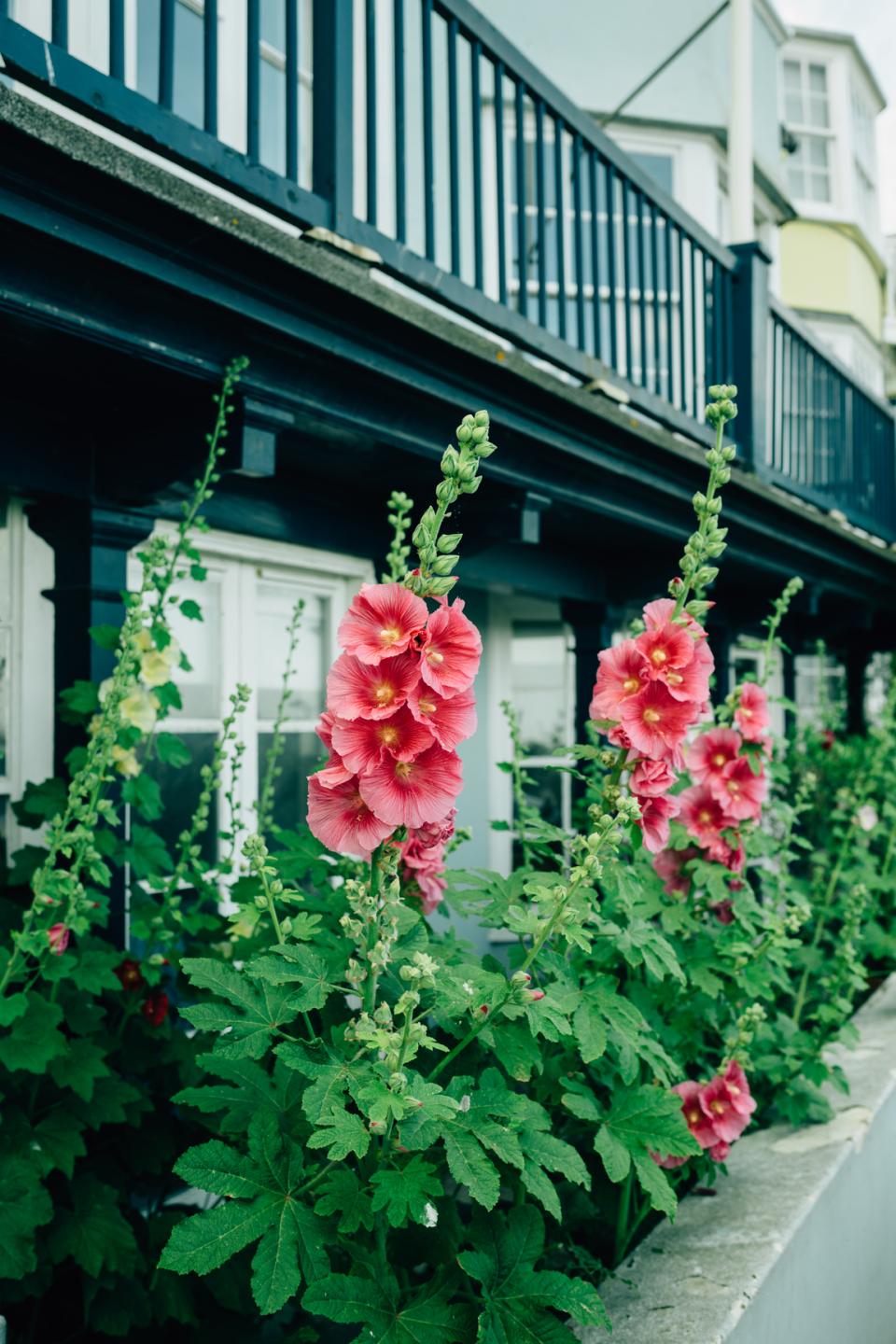
EXTRA TIPS to encourage MORE BEES AND BUTTERFLIES IN YOUR GARDEN
- Butterflies like warm, sheltered spots and don't like the wind. Plant nectar plants close to a wall or fence, or in another sheltered spot.
- Choose flowers that bloom for a long time so that bees and butterflies can enjoy them for as long as possible.
- Look after bees and butterflies not only in spring and summer but in other seasons too. Hang a bee house, butterfly box and/or insect hotel in a sheltered spot. This provides a safe place for bees, butterflies and other insects to shelter, lay eggs, spend the night or hibernate.
- Provide variety in the flowering times of your garden plants so that from March to October you can enjoy colourful garden plants, bees, butterflies and other pollinators.
- Provide as much variety of plants as possible. Vary height and flower shape so that you attract as many different species of butterflies and bees as possible.
- Provide as much dense planting as possible - place plants close together to create hiding places for other insects. This creates space for an ecosystem of pollinators, hunters and prey.
- Butterflies love rotting fruit. If you have an overripe apple, orange or banana in your fruit bowl, place the fruit on a tray outside and attract extra butterflies that way. Be aware, though, of attracting ants, wasps and other less desirable insects too close to your home.
- Butterflies and bees love herbs! Create a herb garden with herbs such as lavender, marjoram, thyme and sage.
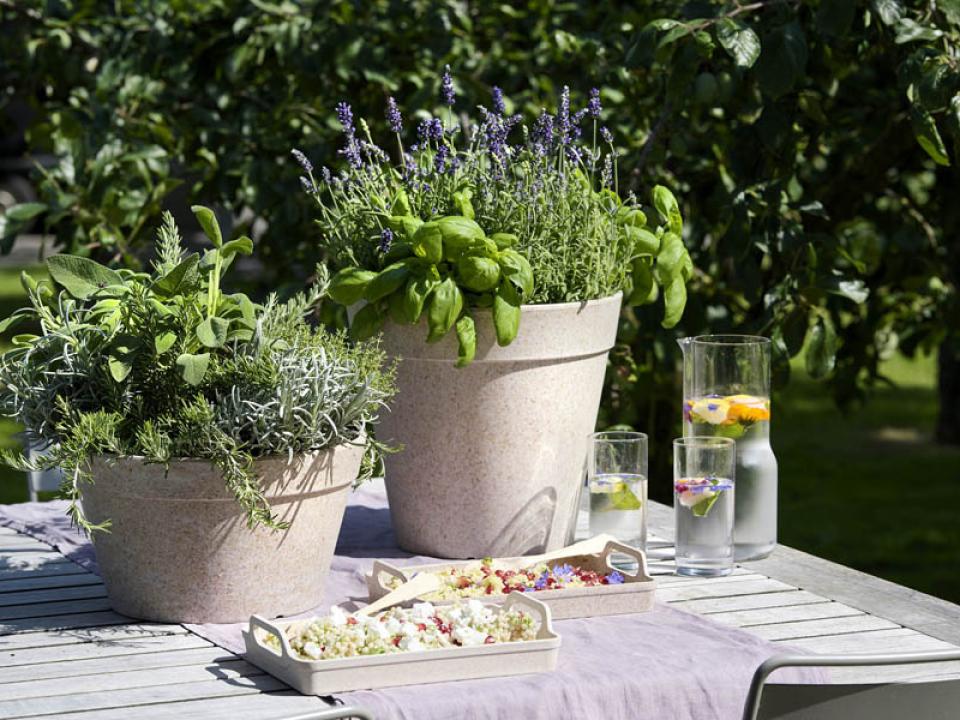
3 BEAUTIFUL READY-MADE PLANT PAIRING EXAMPLES TO ATTRACT BEES AND BUTTERFLIES
Not sure about which plants you should choose or looking for extra inspiration? Take a look at our three examples of plant combinations below.
1. A COLOURFUL CITY BALCONY
Against a brick wall, vines climb high and a plant pot hangs filled with begonias. Purple campanulas in balcony pots provide a nice contrast. How about a mandevilla with pink flowers (right) or a beautiful blue delphinium (behind the pink hydrangea)? Together, these colourful plants create a gorgeous colour palette that will delight bees, butterflies and you.
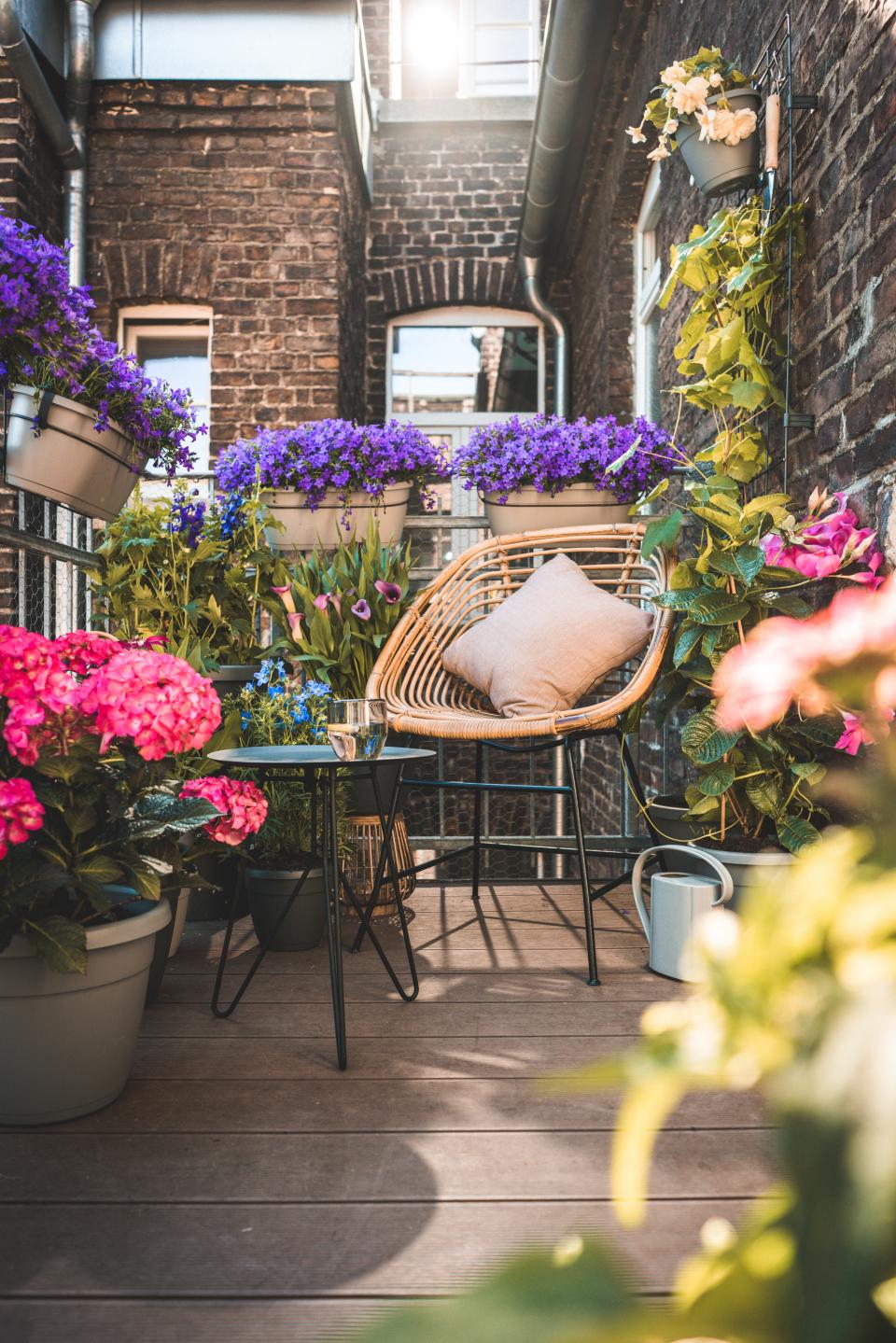
2. COMPANION PLANTING IN A POT
With its sleek design with beautiful graphic lines, this plant combination shines in any outdoor space. We combined in this pot: agapanthus, edelweiss, fescue, lavender, limonium and brunnera. Planting together in a pot look pretty and save space but it also has additional benefits. Companion planting, or planting certain plants strategically next to each other, can ensure plants bring out the best in each other and protect each other from natural enemies.
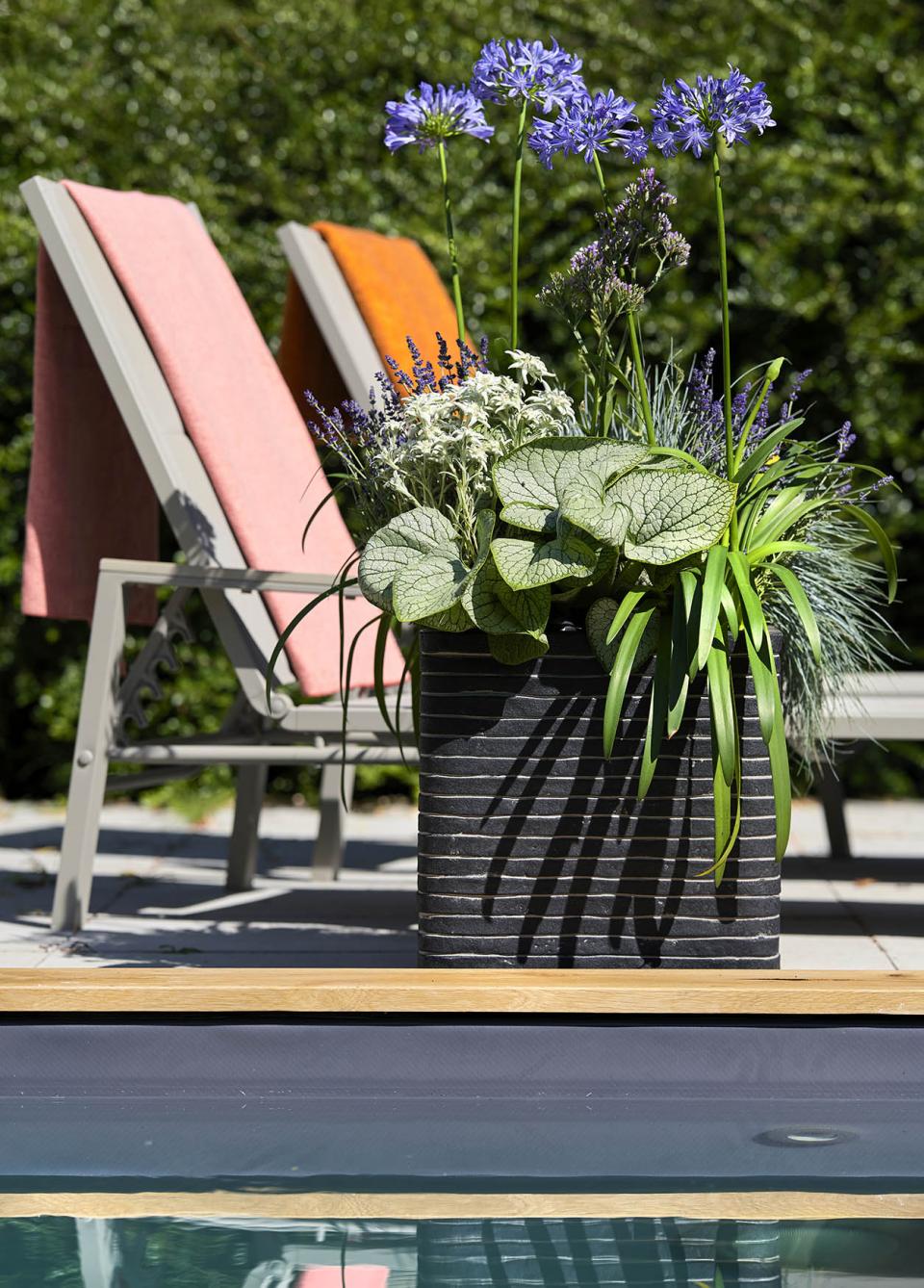
3. SUMMER PARTY IN A POT
With colourful bloomers such as lantana, lavender, cosmos and nasturtiums, you can bring the feeling of summer into a plant pot and experience it from your balcony no matter the weather. Even in very small spaces, it's not difficult to accommodate a variety of flowering and nectar-filled plants. Chances are you'll get regular visits from happy bees!
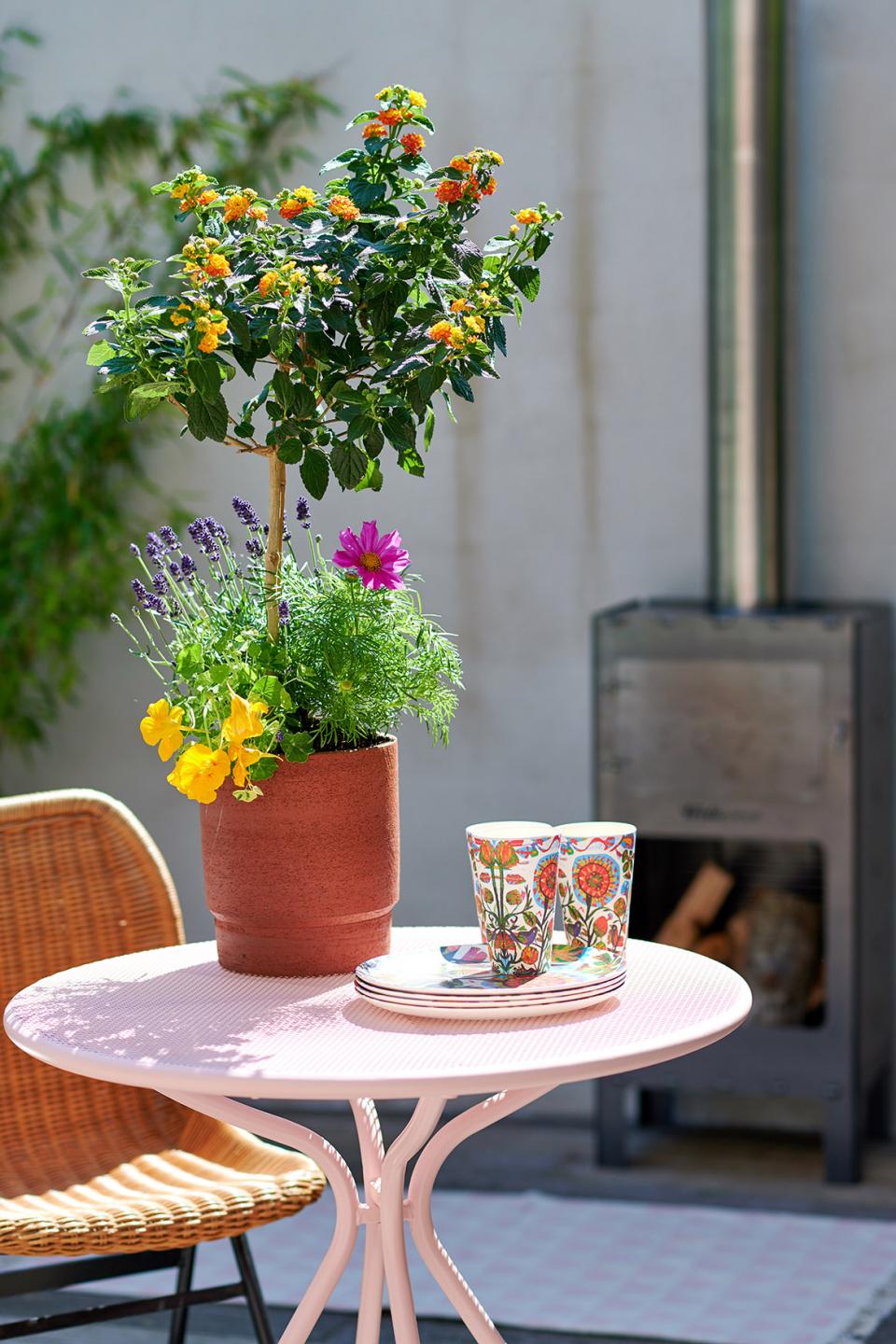
MORE INSPIRATION FOR A THRIVING OUTDOOR SPACE
Discover more ways to green your outdoor space and attract pollinators. Create a floral party in a single square metre of space or check out these four stylish yet small city gardens.





